When it comes to exercising the back and core you often see people who have been struggling with chronic low back pain forgo any direct work in these areas. Crunches and sit ups hurt, back extensions and dead lifts hurt so they just throw them out altogether. The problem with this is that the less you use back and core exercises in your program the more you will develop what’s known as fear avoidance. This is when you experience symptoms and pain doing certain exercises simply due to fear of the exercise causing pain in the past.
In today’s post I am going to give you 13 of my favorite back and core exercises that are safe for the back pained fitness enthusiast
Before we dive in I wanted to say thanks for stopping by, reading this post and sharing it with your friends! I really want you to get the most out of your time here so I put together this private coaching upgrade for you. In it I teach you my top 16 low back pain friendly Core Exercises. I also show you how I would program these exercises for YOU if I was your coach. It’s all free!
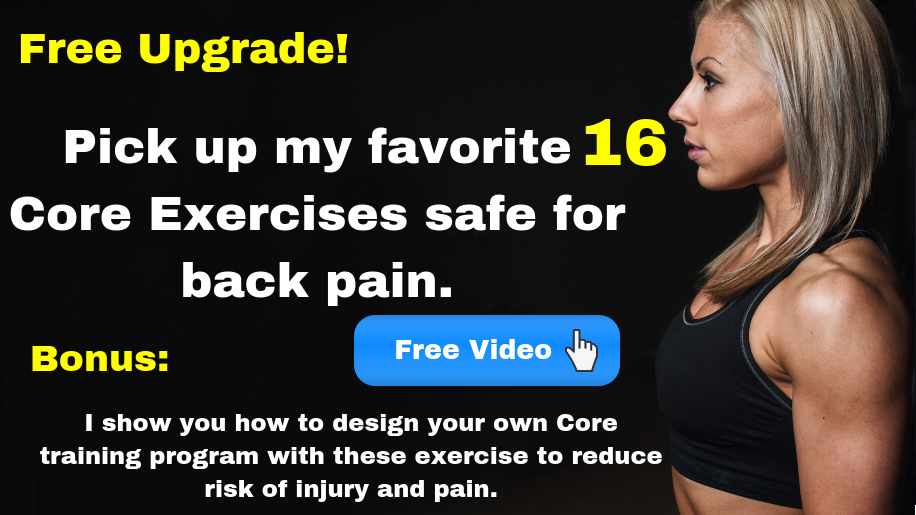
Let’s kick this Back and Core exercise list off with something I have been playing around with more and more.
13 Exercises to Strengthen Your Back and Core
#1: Bridge Marches.
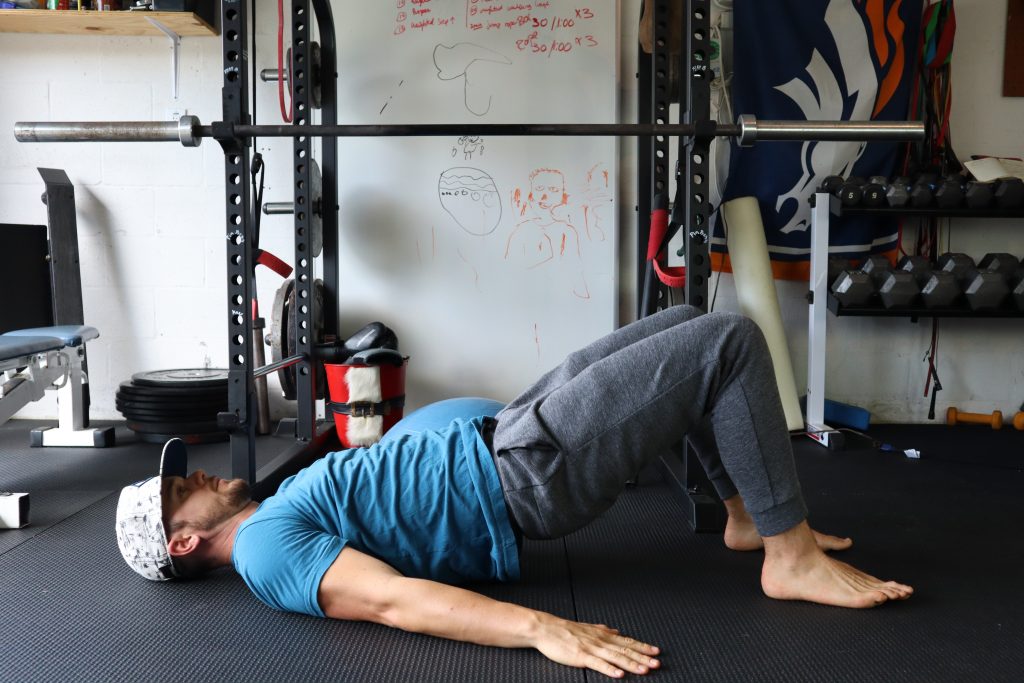
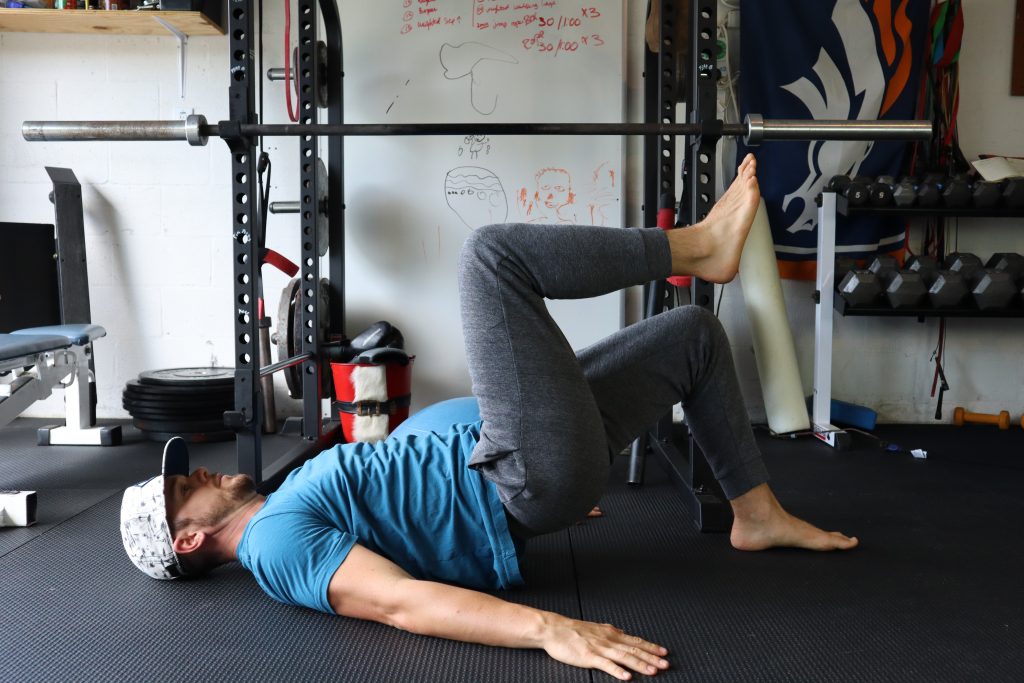
Muscle Group Worked: Core and Lower Back (along with a little hammy too)
The set up:
Lay flat on your back with your heels a few inches from your butt.
Drive through your heels, squeeze your butt and tilt your pelvis back (posterior tilt) just a bit to insure you’re not lifting through your lower back.
The Movement:
Once you’re in the bridge position make sure your core is braced, hips are level, and lower back is as relaxed as possible. When ready, slowly begin to lift one knee towards your chest and stop when your hip creates a 90 degree angle. Slowly return the leg back to the bottom position then repeat the movement with the other leg.
What to look for:
Once you get the hang of this you should be able to transition from leg to leg smoothly without much twisting, jerking or noticeable balance issues at all. The goal for this exercise is NOT to crank on the lower back to try and bring the hips higher. Keep the trunk braced and focus on not over contracting the lower back. What “feels” like you’re in a neutral position may not actually be neutral so if you don’t have a work out buddy, do some exercises in front of a mirror or phone and check your form. If you still don’t know then don’t waste any more time and check out the F4BP membership where you have access to me for critiquing, modifications and key adjustments.
#2 Face Down Extension Presses
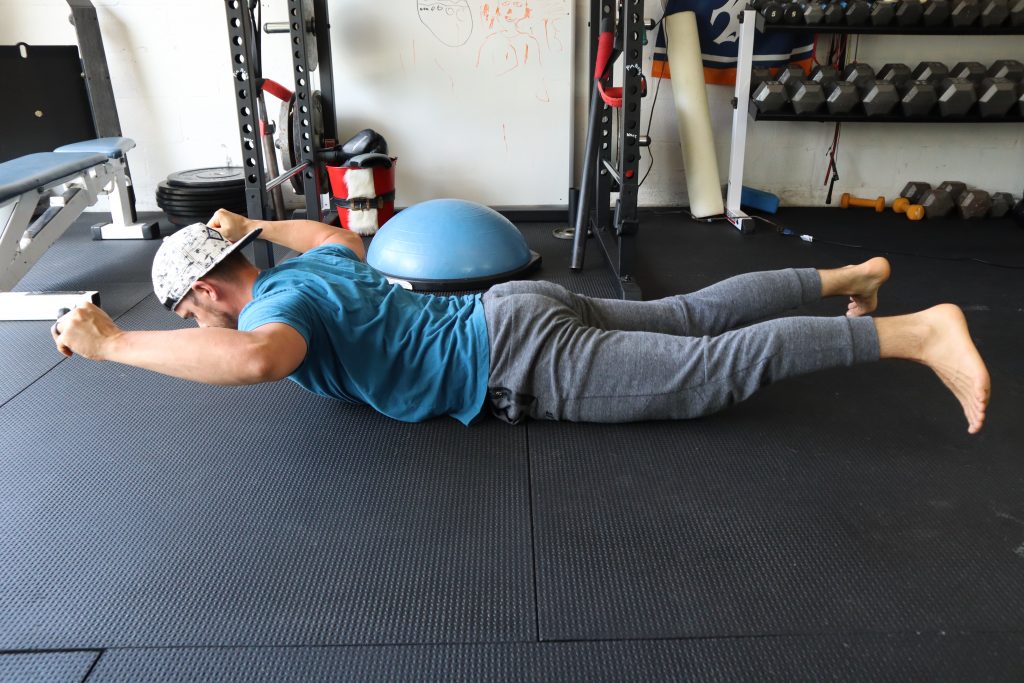
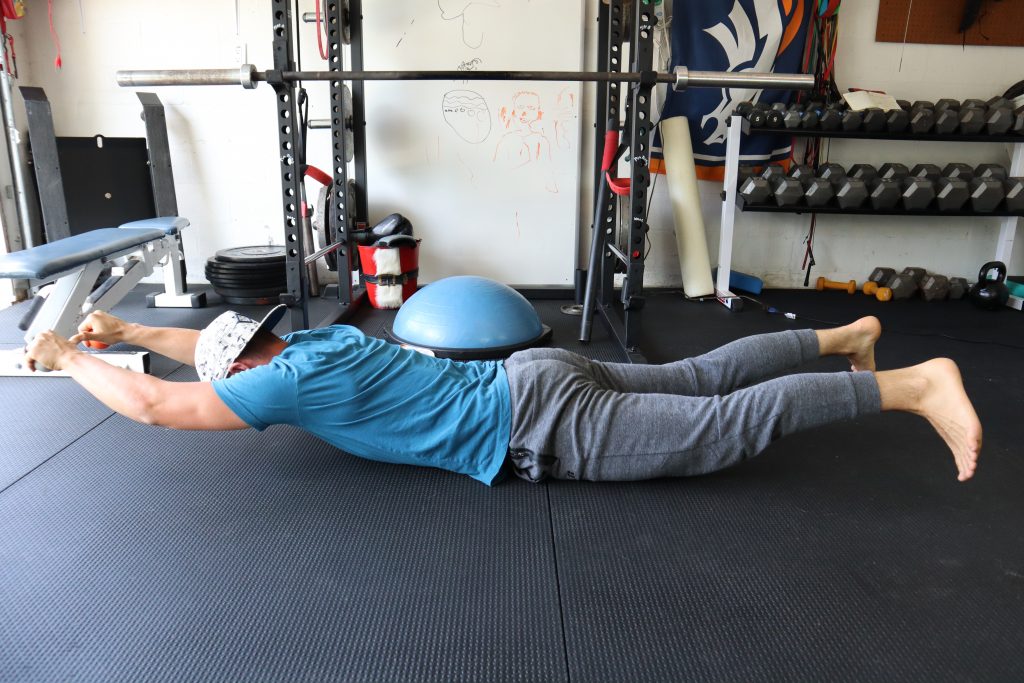
Muscle Group Worked: Lower Back (Along with some mid to upper back)
The set up:
Lay flat on your belly feet shoulder width apart. First contract the glutes and bring the shoulder blades back and down as if you were sliding them into your back pocket. Once these are engaged you should already be experiencing some extension you can go ahead a start contracting the mid to lower back until your chest and lower body is slightly off the ground. With your shoulders start with your elbows tucked by your side as if you were in the bottom position for a dumbbell shoulder press.
The Movement:
Once you’re in the position, 90% of the movement will be going on in the upper body while the trunk experiences a more isometric contraction. For the shoulders, you’re essentially mimicking a shoulder press while focusing on keeping the chest and arms off the floor. Repeat reps of getting into the extension position and executing the shoulder movements. Each extension combined with shoulder movement counts as 1 rep.
What to look for:
The key to doing this exercise with a sensitive back is not to crank in and out of position. Go slow and think about relaxing the lower back at the bottom of each exercise. Most tightness and stiffness during exercises is brought on by fear and how the mind is reacting and feeding off of old experiences. Go slow and make sure you are contracting your glutes and lats before lifting off completely this will help balance the load throughout the exercise.
#3 Ball Roll Out
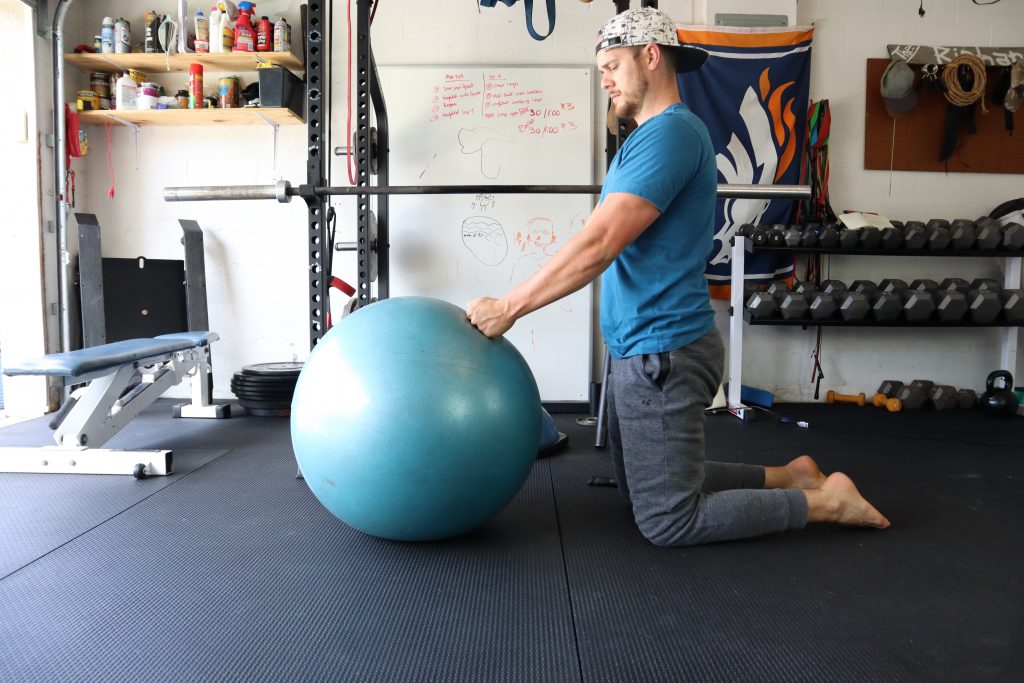
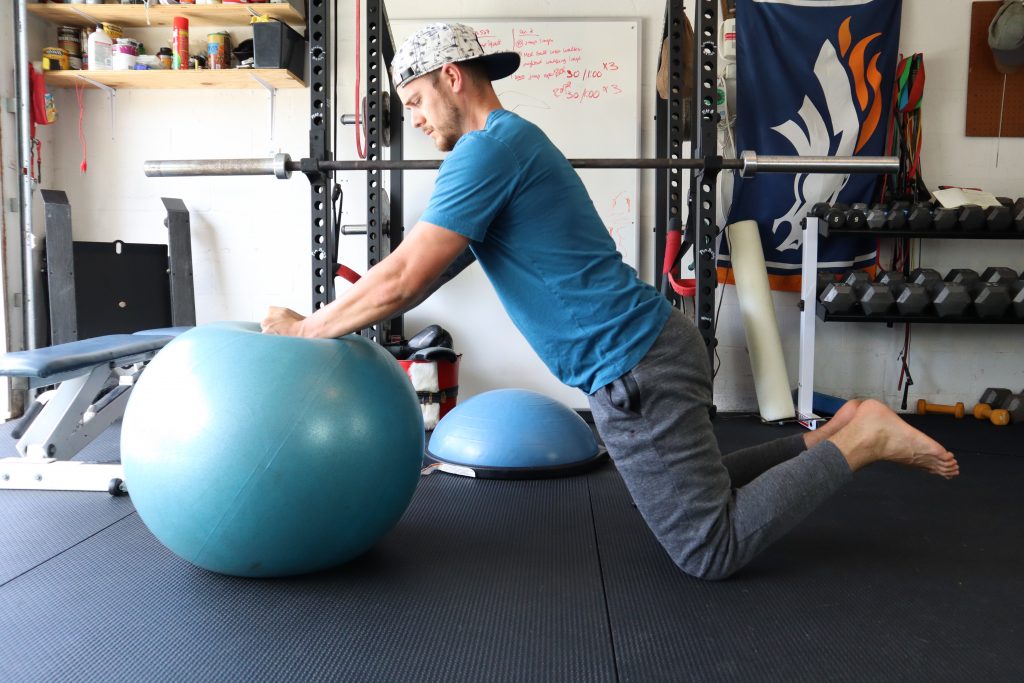
Muscle Group Worked: Back and Core
The set up: Video Demonstration Here
Place a folded-up towel on the ground and stand on your knees using the towel to separate you from the floor. You will definitely want to do this for the sake of your knees! While on your knees, bring a stability ball a few inches from your body and put your outstretched hands onto the ball.
The Movement:
With your outstretched hands on the ball (make sure your arms are straight with very little bend in them). Start to allow the ball to roll away from you as you tilt your body towards the ball. This is very similar to one of the ab wheel roll outs. You will roll out as far as you can while maintaining a solid core contraction and neutral pelvis. To bring yourself back to the starting point think about dragging your hands towards your knees while really giving it a good core contraction. This should initiate the ball rolling back towards your body.
What to look for:
So, the key for this exercise is to hinge at the knees. So, from your knees to the top of your head you want to be in a straight line and as you initiate the movement you’re only leaning out towards the ball as it rolls slowly away from you. This takes a little practice but make sure you stay out of lower back extension when doing this exercise. You typically see peoples lower back droop when trying to come back to the starting position. This usually means the core is NOT staying contracted and/or they are letting the ball go too far away from them. Start in small movements and add depth as you improve!
#4 Arm Plank

Muscle Group Worked: Back and Core (this is a doozy for the whole body as well)
The set up:
Let’s not make this complicated. You’re basically going to be holding the top starting position of a push up.
The Movement:
Start on your hands and knees and stretch one leg out at a time. When one leg goes out contract the glute of that leg and then start to initiate the other leg going out as well. Once you’re in place, both glutes should be engaged, pelvis should be slightly tucked (posterior tilt), shoulder blades should be back and down along with your lats engaged.
You all set? Hold it for time.
What to look for:
For the untrained eye you’re looking for the top portion of the push up. As a coach I want to see your head neutral. I want to feel your shoulder blades pulled down and lats engaged. From their I want to see your glutes engaged, core on and pelvis slightly tucked under. Hang tight because you’re going to hold that for some time!
#5 Ceiling Presses
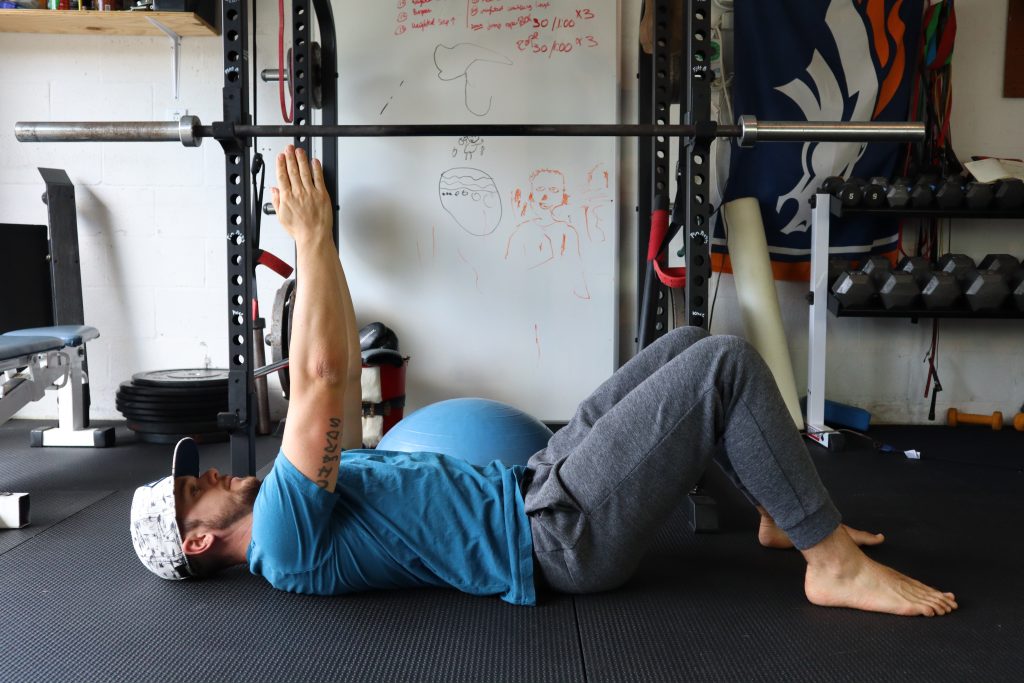
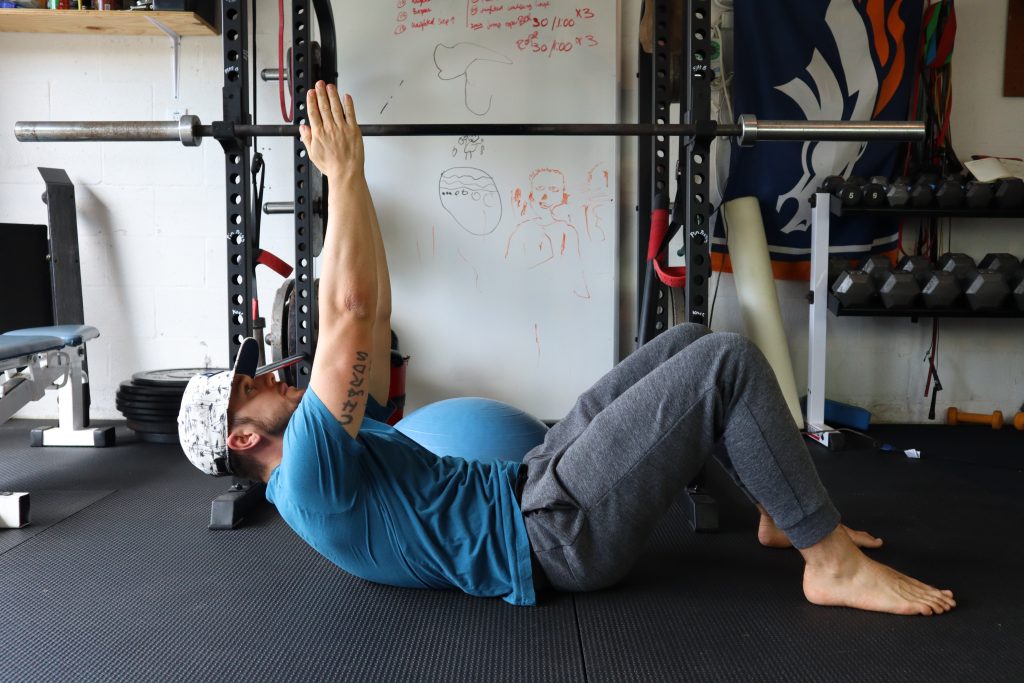
Muscle Group Worked: Core
The set up: Video Demonstration Here
Lay flat on your back with your heels a few inches from your butt. Palms facing each other stretched out your arms straight above your chest towards the ceiling and bring the hands together. This is your starting position.
The Movement:
Once your set the key to this exercise is to use the trunk only to press the hands straight up towards the ceiling. Hold for 3-4 seconds and return slowly. Repeat this for the desired number of sets and reps.
What to look for:
Where people go wrong with this is they do too much of a sit up with this core exercise. I want the hands going straight up and straight down so nothing should be leaving the chest line at all. Keep the head neutral and focus on a core trunk contraction while pressing. Come down slow and make sure your lower back is relaxing at the bottom.
#6 Side Plank
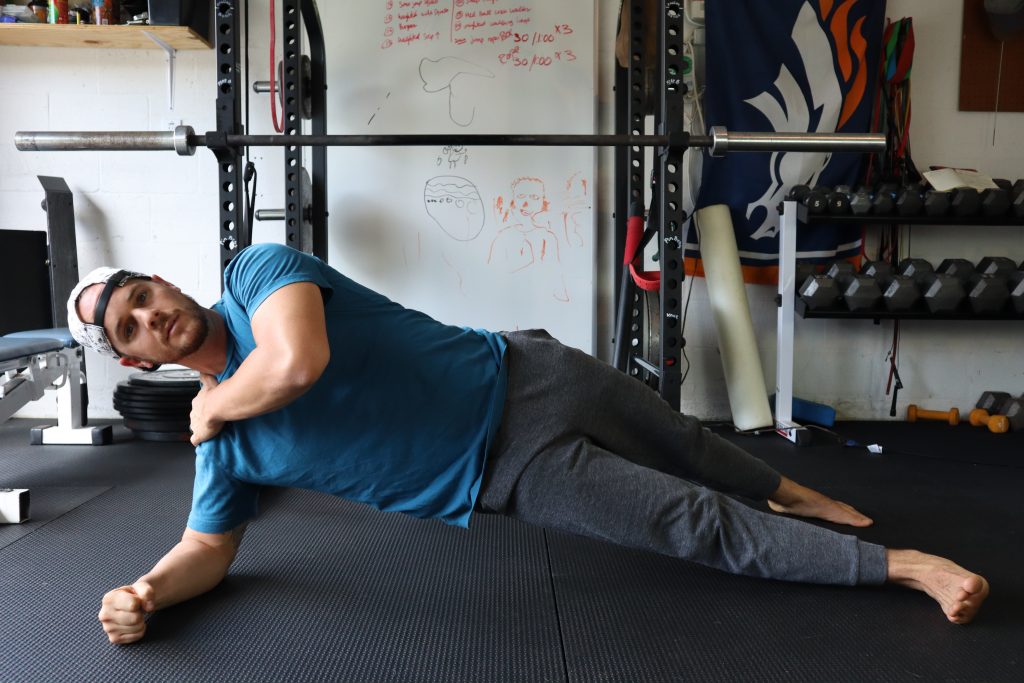
Muscle Group Worked: Back and Core
The set up:
The plank is a house hold name so I am confident you have seen one before. I do want to point out a few things and make sure you know you have options as far as modifications. For this exercise we will be doing the full side plank. Start by lying flat on your side with your legs scissored about 2-3 feet away from each other. Prop your upper body up spreading the weight over your elbow, forearm and hand (make sure this is an even weight distribution).
The Movement:
When ready slowly brace the trunk and lift the body into the plank position. Hold this and slowly breath. Hold it for the desired amount of time and return back to the resting position.
What to look for:
When resting keep the segment of the body from your head to your hips in a straight line. So, you don’t want to be sagging in the middle while you wait to get into the full plank position. People with sensitive lower backs will often complain of pain in this waiting position. So be mindful and make sure you’re not doing anything to trigger any discomfort.
#7 Y Raises on Belly
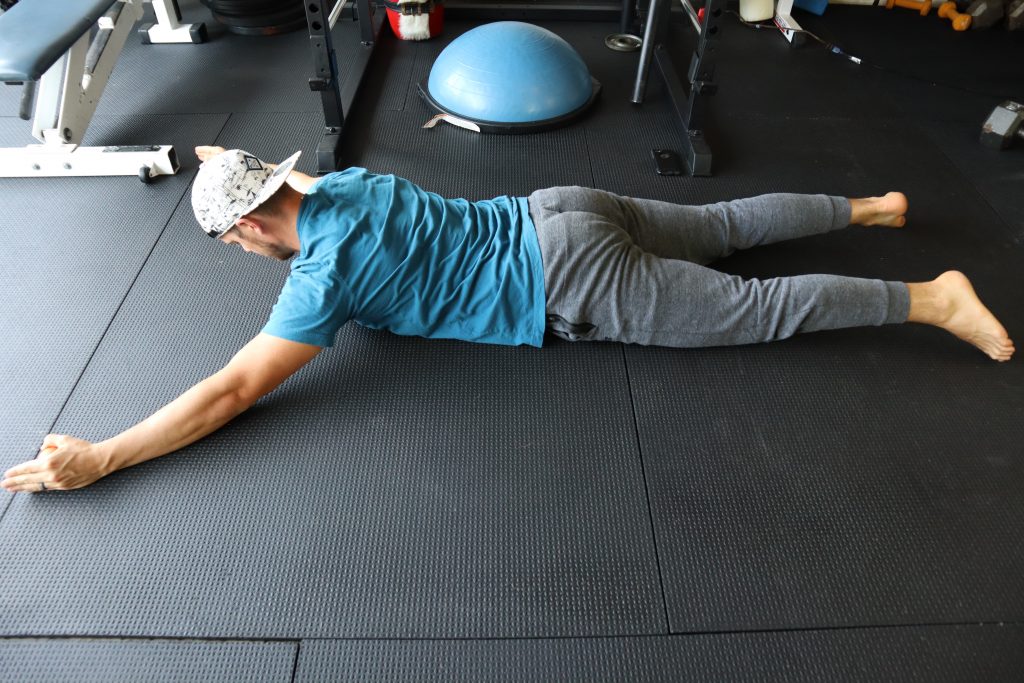
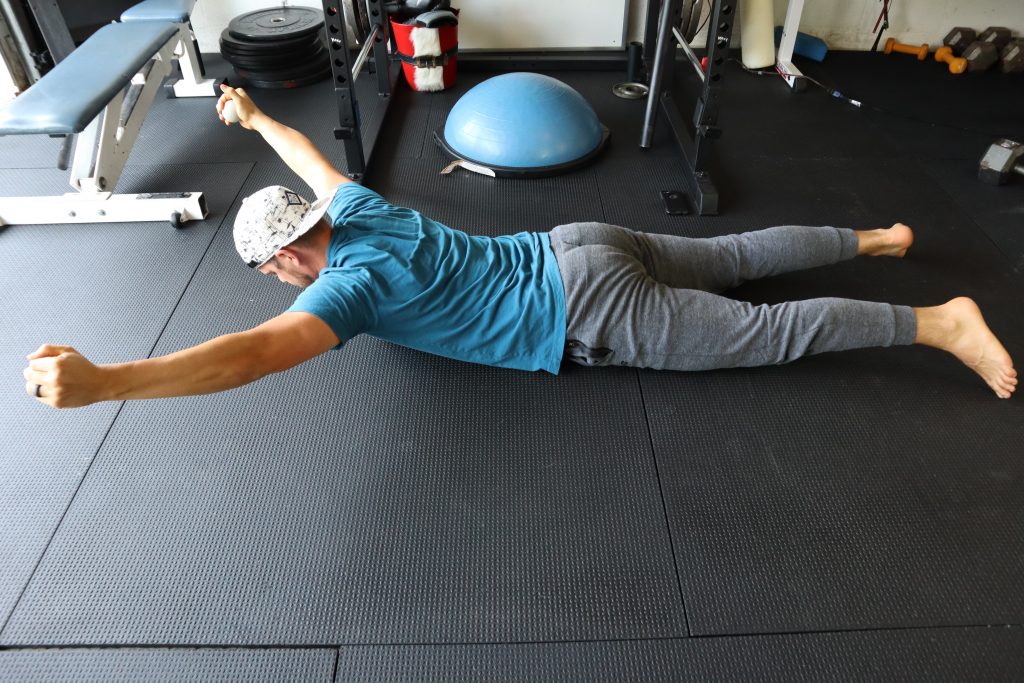
Muscle Group Worked: Back and Core (entire posterior chain)
The set up:
Lay flat on your belly feet shoulder width apart. First contract the glutes and bring the shoulder blades back and down as if you were sliding them into your back pocket. Once these engage you should already be experiencing some extension you can go ahead a start contracting the mid to lower back until your chest and lower body is slightly off the ground. With your arms over your head you want to create a “Y” with your arms. I like to hold onto something in my hands that I can squeeze to help keep things engaged.
The Movement:
When you are in the “Y” position follow the instructions for the set up to ensure you are ready to start the actual movement portion. When doing the reps you are not relaxing the lower half of your body so once the glutes are engaged you’re going to keep them engaged and only lift the arms and chest then bring them back down before repeating. You want to maintain tension in the lower back and only move the upper body the best that you can.
What to look for:
The key to doing this exercise with a sensitive back is not to crank in and out of position. Go slow and think about relaxing the lower back at the bottom of each exercise. Most tightness and stiffness during exercises is brought on by fear and how the mind is reacting and feeding off of old experiences. Go slow and make sure you are contracting your glutes and lats before lifting off completely this will help balance the load throughout the exercise.
#8 Stability Ball Saws
Muscle Group Worked: Back and Core (entire trunk)
The set up: Video Demonstration Here
Grab a standard (pumped) stability ball and get into a plank position on the ball. When getting into position start on your knees and bring one leg up at a time contracting the glutes and slightly tilting the pelvis back (posterior tilt).
The Movement:
Once you are stable slowly roll the ball forward using your arms until you reach a point where you feel a strong tension on the core without losing control of your position. Return the ball to neutral and then bring the elbows into your body to roll the ball the opposite way. When completed you should have successfully accomplished a “sawing” motion with your arms and the ball.
What to look for:
Staying in a good and symptom free position is key. If you start to roll out and your lower back starts to act up tone the distance back to a more manageable distance. It’s not that the exercise is bad for you but you may need to tone down the intensity to stay within your pain threshold.
#9 Stability Ball Extensions
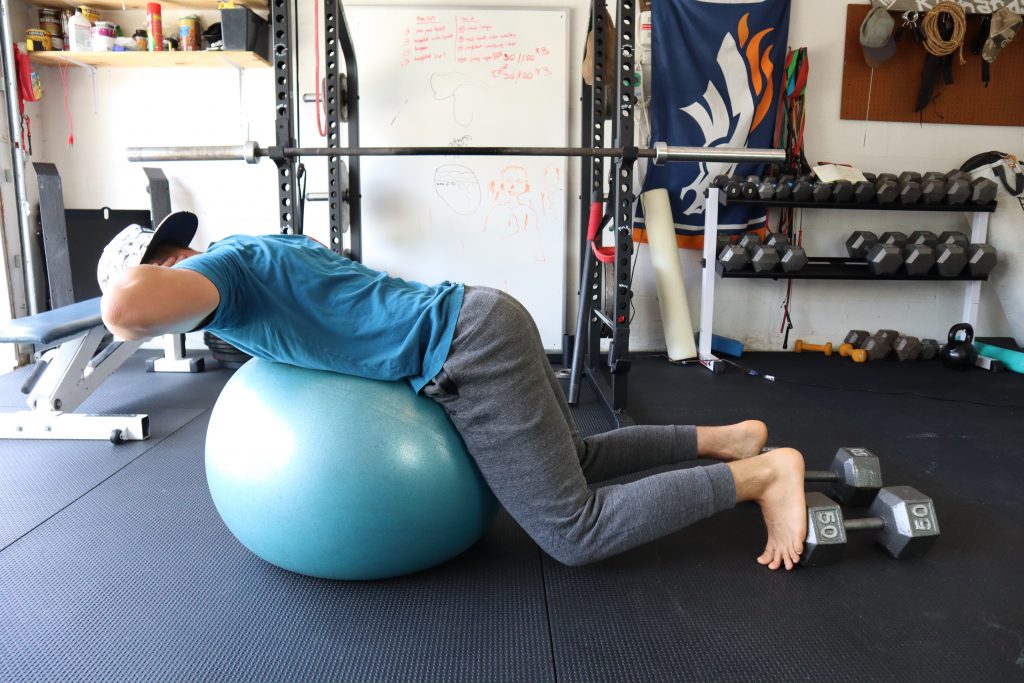

Muscle Group Worked: Back ( upper and mid posterior chain)
The set up:
Set your feet a little wider than shoulder width apart up against a wall or a set of dumbbells like you see here (make sure the dumbbells are heavy enough to support your weight. 185 lb person would need 60+lb DB’s). Position the ball under your pelvis so that you have ample room to roll the front part of your body over the ball to get slight flexion in the spine when at rest. Place your hands behind your head and and engage the lats and glutes.
The Movement:
Start in the resting position and initiate the movement in the glutes and lats first. Extend at the lower back juts enough to feel the mid to upper posterior chain contract. When going into extension it’s not about how far back you can go. A few inches past neutral is just fine. Return back to the resting position to complete 1 rep.
What to look for:
You’re aiming for slow controlled extension without any flair ups. Try to keep your head in line with the rest of your upper body when doing this even when in extension.
#10 Front Plank
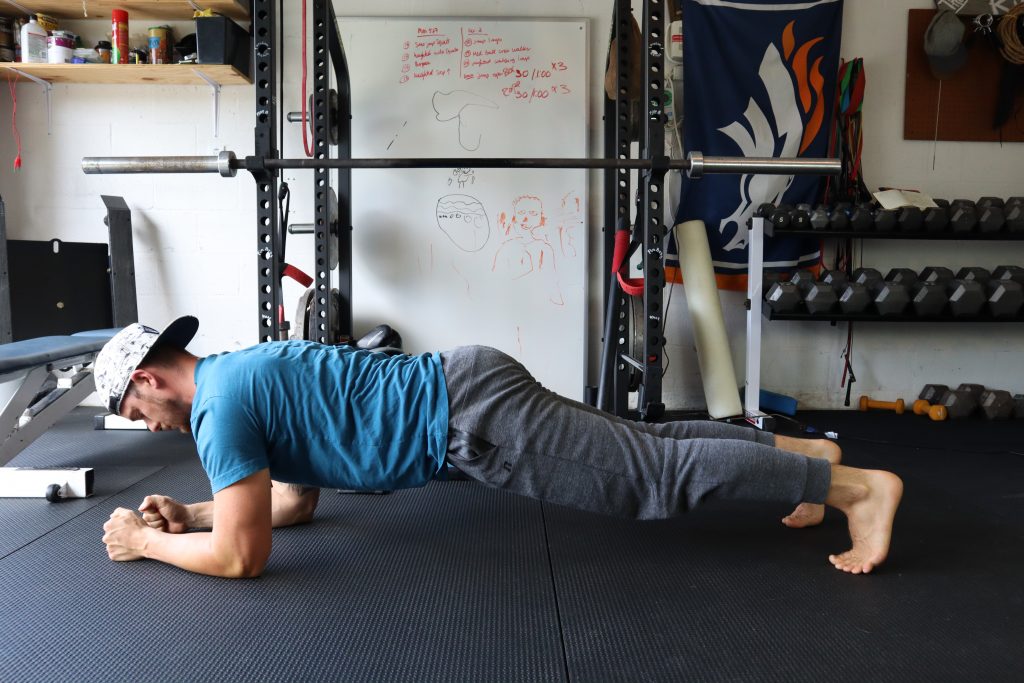
Muscle Group Worked: Back and Core (entire posterior chain)
The set up:
Let’s not make this complicated. The plank is a house hold name so odds are have seen or attempted one in your life time.
The Movement:
To initiate the exercise start on your knees and stretch one leg out at a time. With each leg, contract the glute before bringing the other leg into position. At the top position (what you see above) your shoulders are pulled down, lats engaged, shoulders are directly over your elbows, glutes are engaged and pelvis is slightly tilted under.
What to look for:
For the untrained eye you’re looking for a relatively neutral position. As a coach I want to see your head neutral. I want to feel your shoulder blades pulled down and lats engaged. From their I want to see your glutes engaged, core on and pelvis slightly tucked under. All of this should create a slight rounded look in this position. Not too noticeable but for someone who knows what they are looking for this position is ensuring that the trunk is on and the lower back is NOT the leading muscle group.
#11 Bird Dog
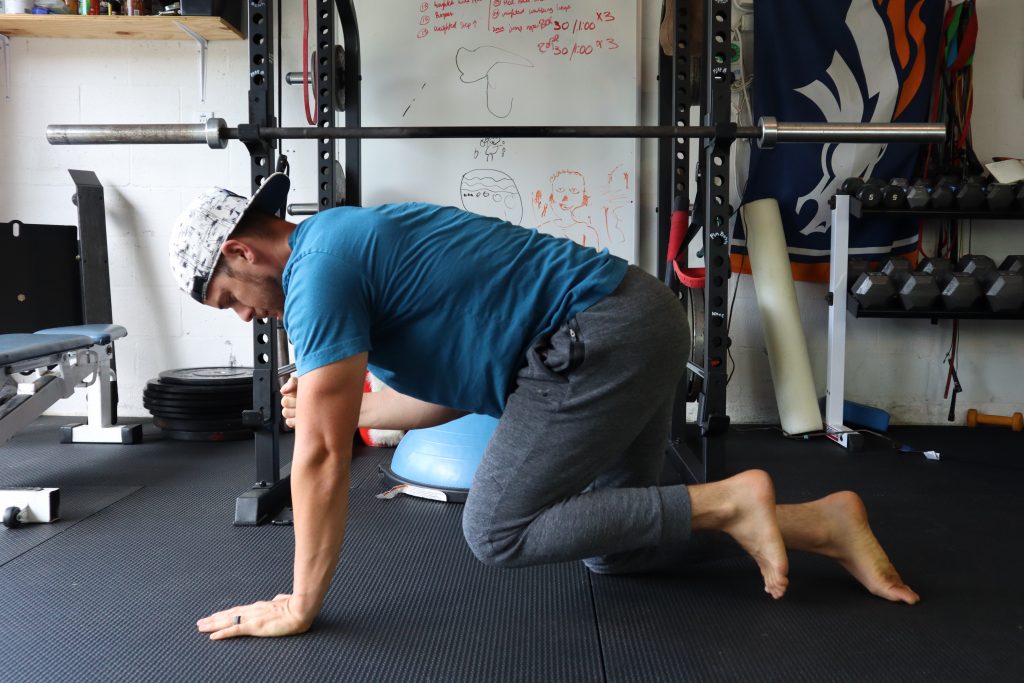
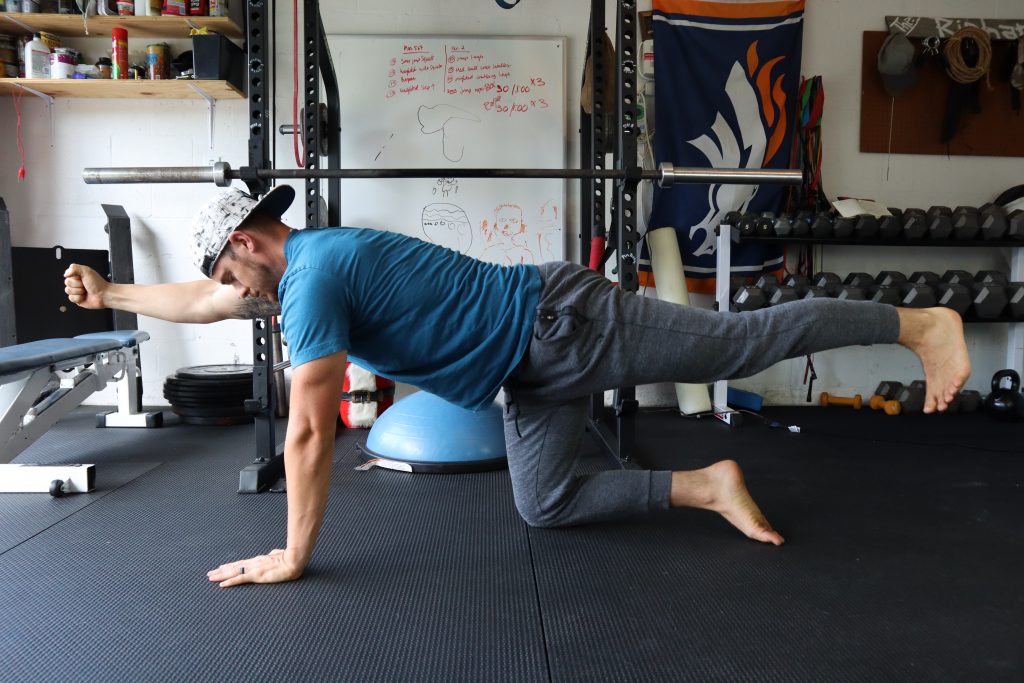
Muscle Group Worked: Back and Core (entire posterior chain)
The set up: Video Demonstration Here + How to Modify
Start on all 4’s with a slight brace to the trunk. This will be your resting place. During the action phase of this exercise you will have your opposite leg and arm stretched out trying to create a table.
The Movement:
When ready slowly take your leg back, driving your heel away from the body. At the same time you are pushing your opposite arm straight out driving the fist away from the body. Both limbs should be creating tension throughout the body as if trying to pull the middle of the body apart. This is the “top” position of the exercise. You will repeat this cycle for as many times as desired.
What to look for:
A big issue I see is getting too much extension in the lower back. It’s unnecessary and if you’re dealing with extension based pain then this will only piss it off. You want a tense body from limb to limb with a neutral pelvis so not torqued one way or the other.
#12 Plank Up Downs
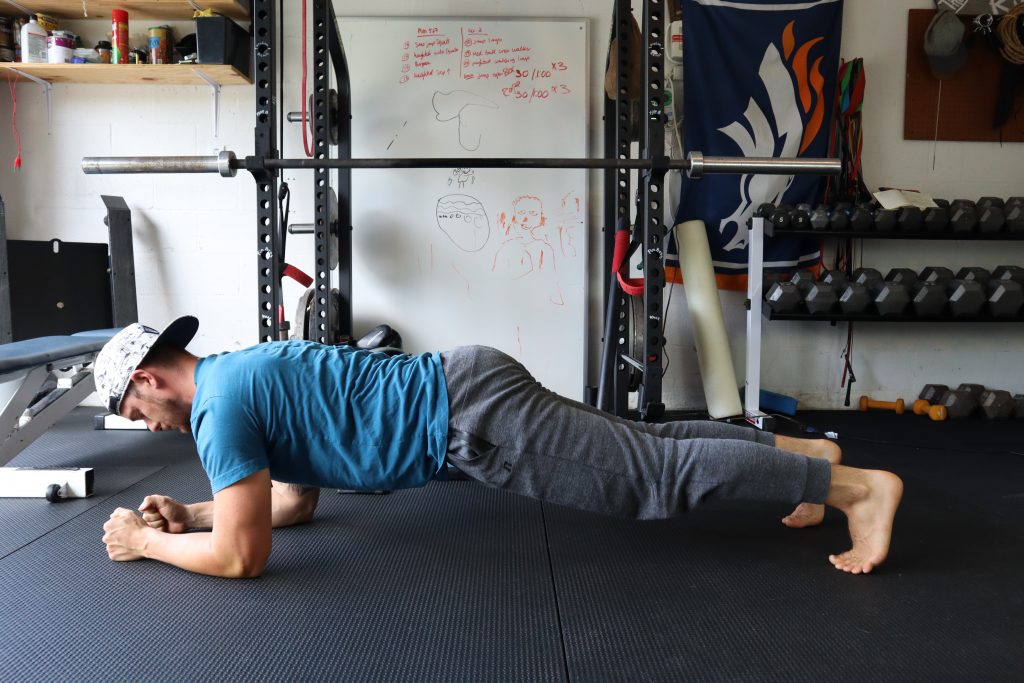

Muscle Group Worked: Back and Core (entire posterior chain)
The set up: Video Demonstration Here
Start in the plank position (refer to plank exercise for coaching cues). This exercise is based around the transition from elbow plank to straight arm plank. So pay close attention to what is happening in-between these two positions not just the beginning and end position. At the top position you should be in the straight arm plank hold.
The Movement:
Since the transition is this exercise is the secret sauce that’s what I want to focus on. When going to initiate the movement keep the pelvis as neutral as possible and slightly rotate at the trunk to bring the arm out of the plank position and into a push up position. Start with one side of the body then move to the opposite side until you are completely in the top position. Reverse this to get back down to the starting plank position
What to look for:
Reduce the wobble. The big issue I see is too much butt wobble then trying to maintain a stiff trunk. You’re wanting to challenge the bodies ability to brace the spine when movement is applied. When you go to initiate the transition, stay tight and twist as little as possible.
#13 Bridge Leg Extensions
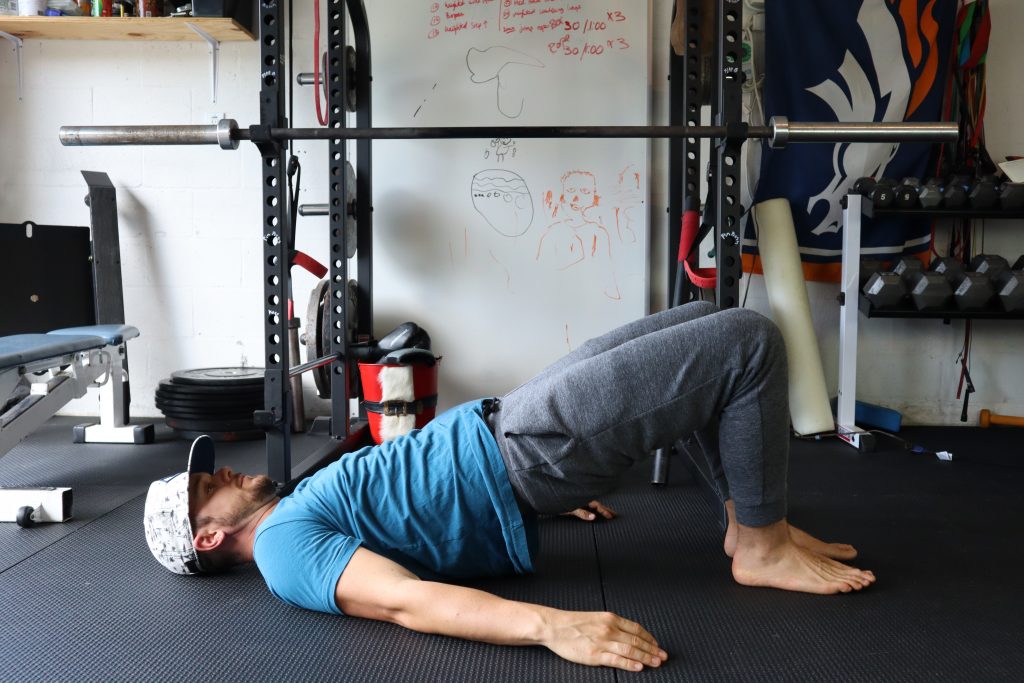
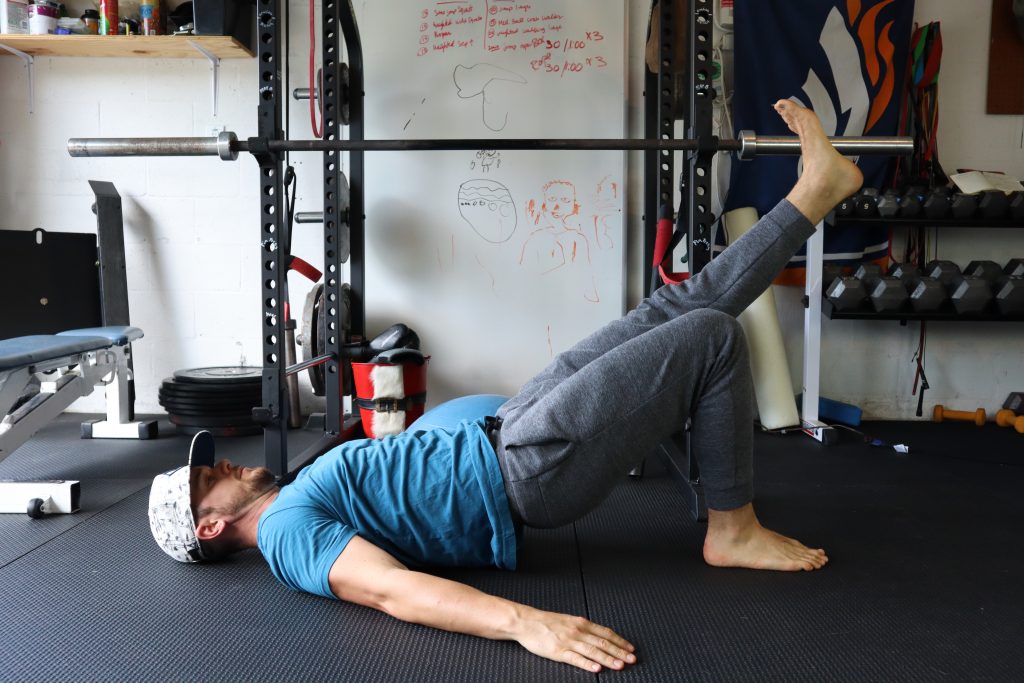
Muscle Group Worked: Back and Core (along with a little hammy too)
The set up:
This exercise is going to have the same feel as the bridge marches but it’s a little bit more sassy. Lay flat on your back with your heels a few inches from your butt.
Drive through your heels, squeeze your butt and tilt your pelvis back (posterior tilt) just a bit to insure you’re not lifting through your lower back.
The Movement:
Once you’re in the bridge position make sure your core is braced, hips are level, and lower back is as relaxed as possible. When ready, slowly begin to straighten the leg from the knee. Slowly return the leg back to the bottom position then repeat the movement with the other leg.
What to look for:
Once you get the hang of this you should be able to transition from leg to leg smoothly without much twisting, jerking or noticeable balance issues at all. The goal for this exercise is NOT to crank on the lower back to try and bring the hips higher. Keep the trunk braced and focus on not over contracting the lower back. What “feels” like you’re in a neutral position may not actually be neutral so if you don’t have a work out buddy, do some exercises in front of a mirror or phone and check your form. If you still don’t know then don’t waste any more time and check out the F4BP membership where you have access to me for critiquing, modifications and key adjustments.
That’s it!
13 of my favorite Back and Core exercises you can do just about anywhere!
I know there are lots more you can pick from so let me know what your favorites are below! What is this list missing!? Leave your comment below!
Thanks for checking it out and be sure to share this article with your friends!
Your coach,
William
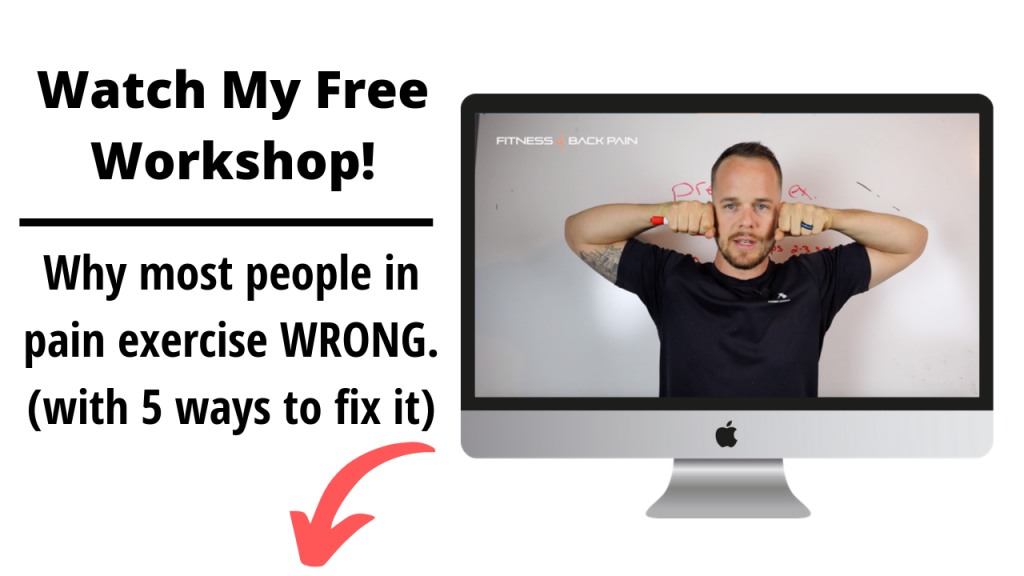
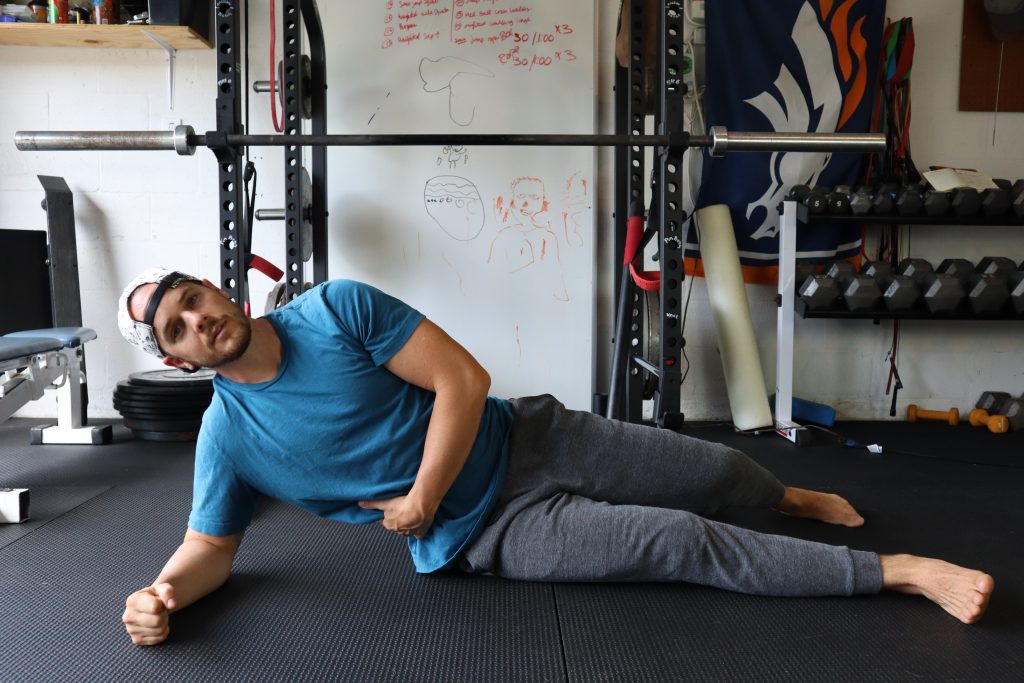
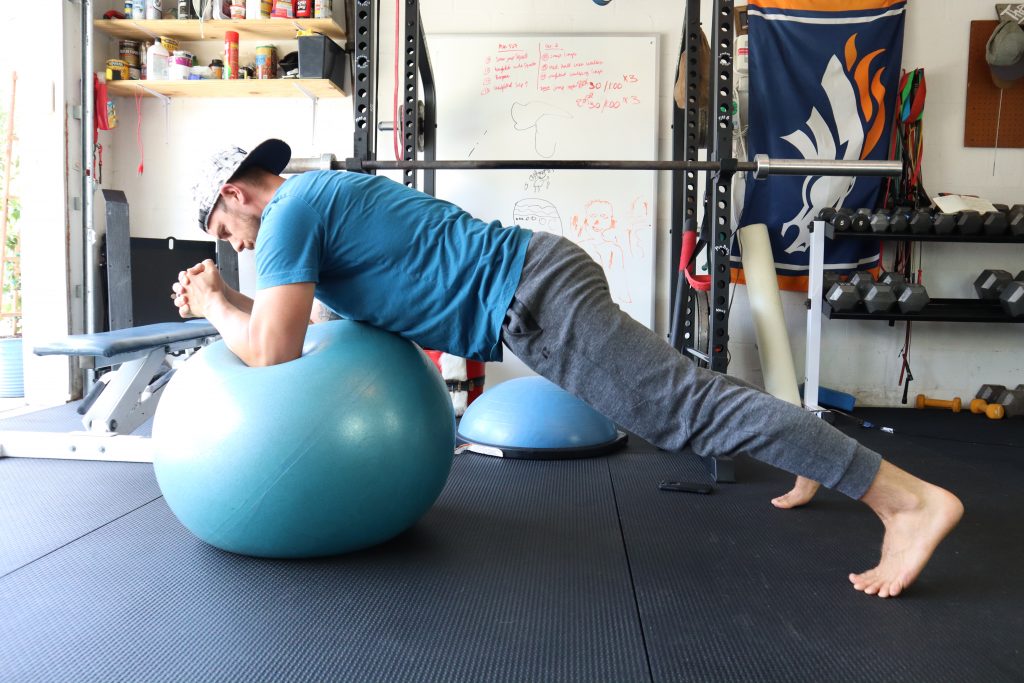
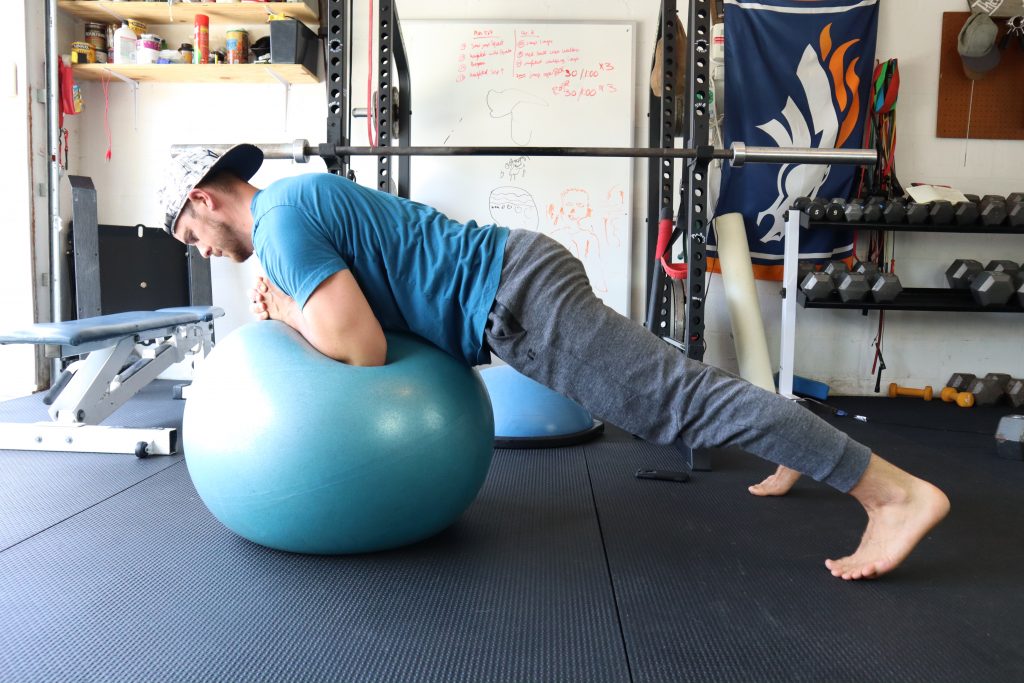


Great Article,
I do about 6 of these already, so will add the others. A very short video showing the actual movement would be useful.
keep it up!
Hey Mathew!! I am actually working to add these in. Some of the exercises have links to demonstrations but I’ll be embedding them within the week!
Thanks for checking them out and commenting!